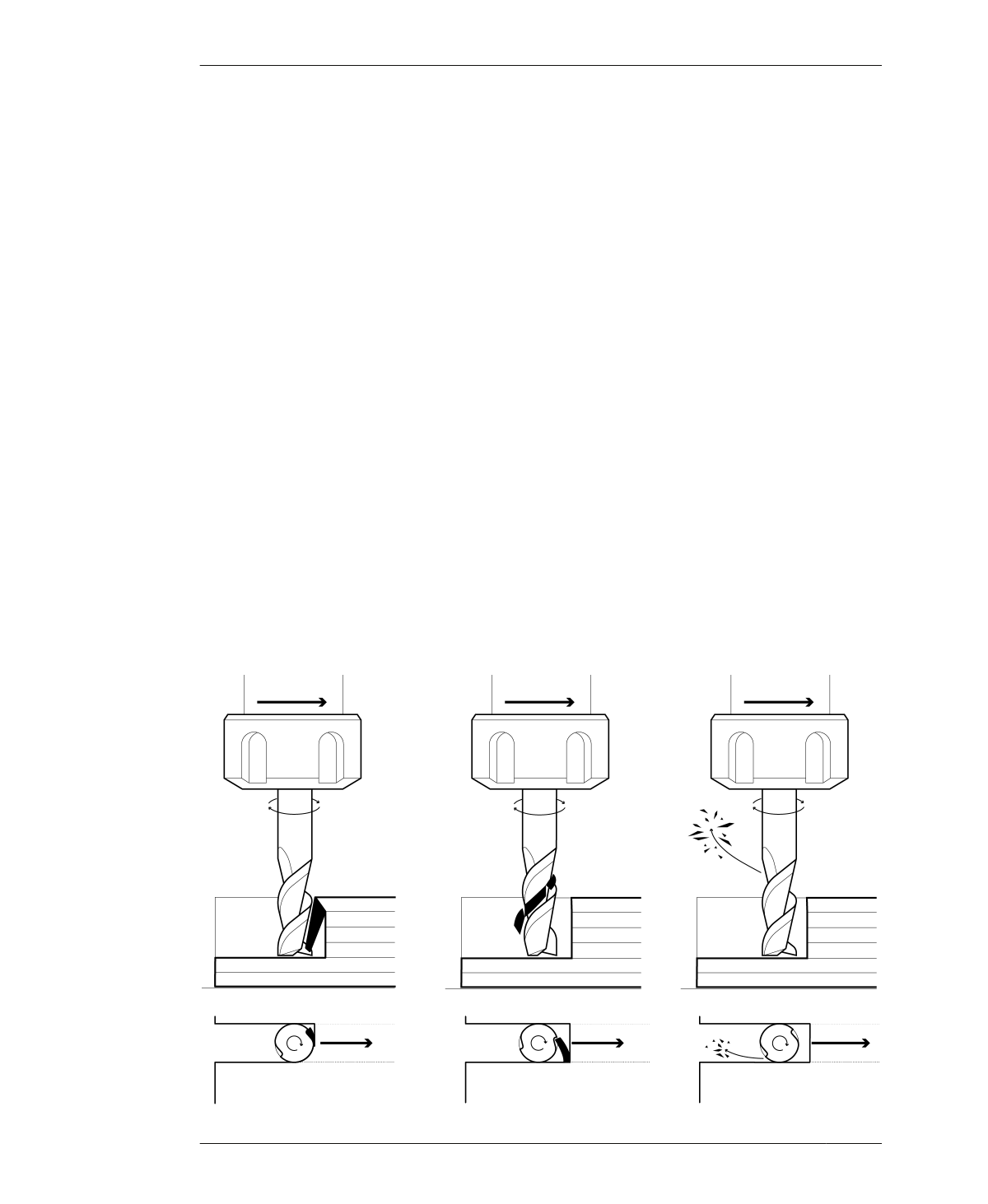
SPINDLES AND SPEED
SPINDLES AND SPEED
Generically, a spindle is a rotating shaft that
transfers motor power to a cutter as it spins
around an axis. When applied to a material, the
tool attached to the spinning spindle bites into
the substance, creating subtractive waste
products, called chips, with each revolution.
The frequency of rotation, or speed, of a turn-
ing mechanical component around a fixed axis
is measured in revolutions per minute. Rota-
tional speed can be abreviated as: RPM, rev/
min, or r/min.
On a machine, the term “spindle” refers to the
entire motorized assembly that moves up and
down the z-axis, not just the shaft. Spindles
conventionally spin clockwise (although there
are a few that spin counter-clockwise), and
most tooling—and all the machining informa-
tion in this book—assumes a clockwise rota-
tion.
CHIP FORMATION
As the spindle turns a tool, the cutting edge sli-
ces into the material, removing a fragment
called a chip. The size of the chip is called chip
load.
Chips are not just the waste product of machin-
ing—they are key to heat dissipation. The act of
cutting a chip generates a small amount of fric-
tional heat. Chips absorb this heat, pulling it
away from the tool and the workpiece, as they
are ejected through the flutes. If this heat were
allowed to build up, it could quickly dull tools,
leave burn marks on wood, or even start a fire.
Creating chips that dissipate heat quickly while
balancing both cut quality and time spent is
fundamental to machining. The speed that a
machine turns a cutter has an impact on what
materials can be cut and what type of tool can
be used. Different machine types have different
ranges of spindle speed.
FIGURE 6-1
Chip formation
142
DESIGN FOR CNC
